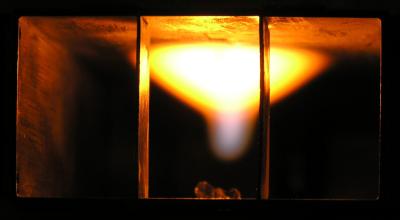- Home
- News
- General News
- Great balls of fire!
Great balls of fire!
29-03-2008
The Economist reports on research at the ESRF involving fireballs
Share
A group of scientists from the Universities of Rennes (France) and Tel Aviv (Israel), together with scientists from the ESRF, reports that clouds of nanoparticles can produce fireballs - similar to the balls of fire people claim to have seen during thunderstorms. Their publication in Physical Review Letters attracted the attention of the science editor of The Economist who has, as always, succeeded not only to explain complex science in simple terms but also to put the results into the wider context. The article from the print edition of 29 March 2008 is available online under: http://www.economist.com/science/displaystory.cfm?story_id=10918140.
In a nutshell, small-angle X-ray scattering at the ESRF's ID02 beamline was used to study fireballs ejected into air from molten hot spots in borosilicate glass produced by microwave heating. The particle size distribution, density, and decay rate in these free-floating fireballs were measured and the results show that such short-living, laboratory-produced fireballs can be considered as a dusty plasma made of an ensemble of charged nanoparticles.
 |
|
|
Photo of a fireball. Image courtesy E. Jerby, Tel Aviv University. |
Principle publication and authors
J.B.A. Mitchell (a), J.L. LeGarrec (a), M. Sztucki (b), T. Narayanan (b), V. Dikhtyar (c), and E. Jerby (c), Evidence for Nanoparticles in Microwave-Generated Fireballs Observed by Synchrotron X-ray Scattering, Phys. Rev. Lett. 100, 065001 (2008).
(a) P.A.L.M.S., U.M.R. No. 6627 du C.N.R.S., Université de Rennes I (France)
(b) ESRF
(c) Faculty of Engineering, Tel Aviv University (Israel)



